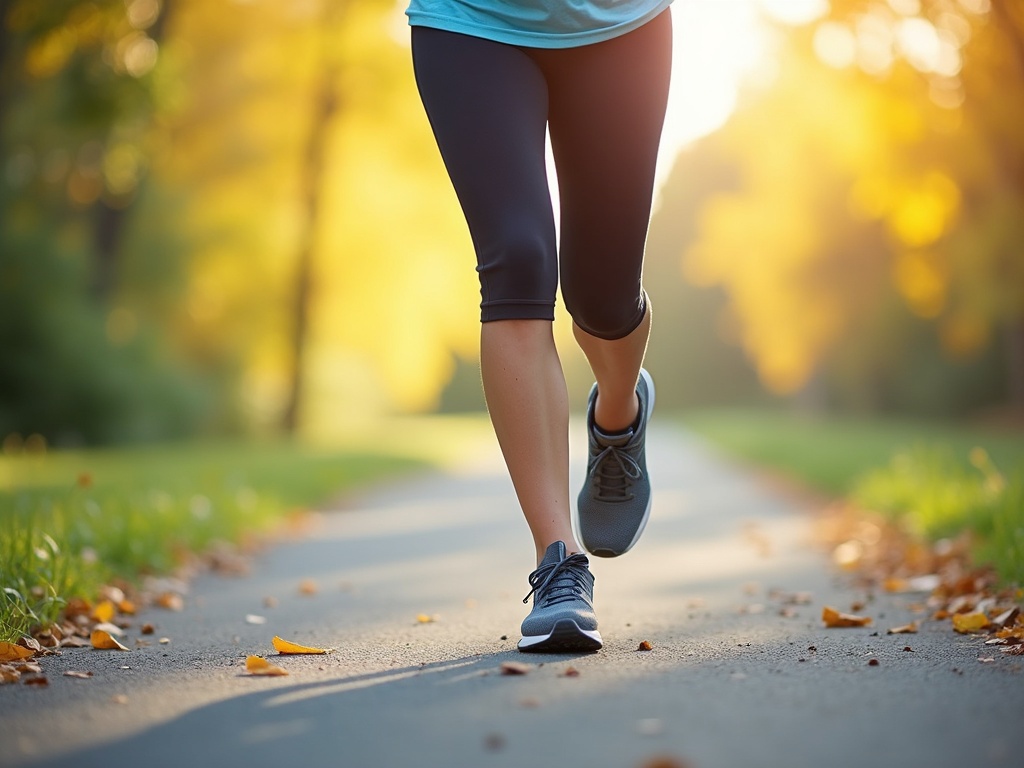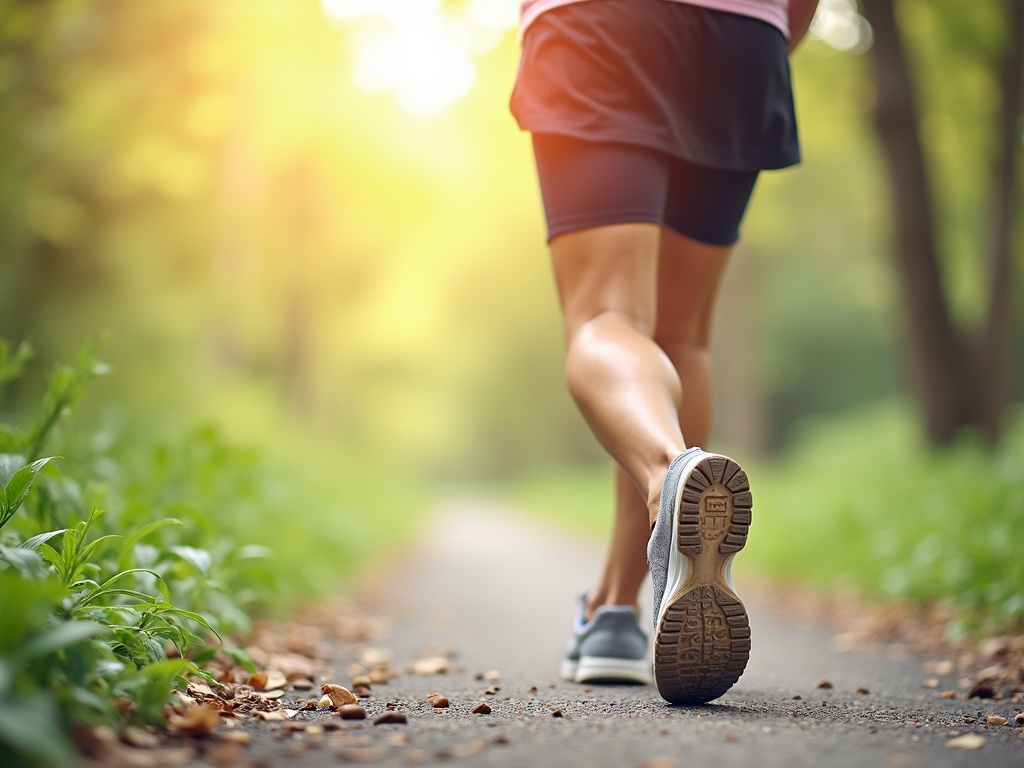Is Walking Good for Knee Arthritis? What You Need to Know
That first twinge, that familiar ache, that nagging stiffness in your knee – it's the unwelcome signature of arthritis. And if you're like many, your first instinct might be to reach for the couch, fearing that movement will only make things worse. But what if I told you that one of the best things you can do for your arthritic knees is to lace up your shoes and go for a walk? Yes, walking. Let's explore how this simple, accessible exercise can be a powerful tool in managing knee arthritis and reclaim your mobility.
Understanding Knee Arthritis
Before we dive into the benefits of walking, let's quickly recap what knee arthritis actually is. Osteoarthritis, the most common type, is a degenerative joint disease where the cartilage that cushions the bones in your knee gradually wears away. This leads to bone-on-bone friction, causing pain, stiffness, swelling, and decreased range of motion.
While there's no cure for arthritis, there are many ways to manage its symptoms. Medications, injections, physical therapy, and, yes, exercise, all play a vital role. And when it comes to exercise, walking often emerges as a frontrunner.
The Benefits of Walking for Knee Arthritis
So, why is walking so often recommended for people with knee arthritis? Here’s a breakdown of the key advantages:
- Pain Reduction: It might seem counterintuitive, but movement can actually reduce pain. Walking helps lubricate the joint, easing stiffness and making movement less painful. Think of it like oiling a rusty hinge – it allows for smoother operation.
- Strengthening Supporting Muscles: Walking strengthens the muscles around your knee, particularly the quadriceps, hamstrings, and calf muscles. Stronger muscles provide better support and stability for the joint, reducing stress on the arthritic cartilage.
- Weight Management: Excess weight puts extra pressure on your knee joints, accelerating cartilage breakdown and worsening pain. Walking is an excellent way to burn calories and manage your weight, alleviating some of that pressure.
- Improved Range of Motion: Regular walking helps maintain and even improve the range of motion in your knee. This makes everyday activities like climbing stairs, getting in and out of chairs, and bending down easier.
- Enhanced Bone Health: Walking is a weight-bearing exercise, which means it puts stress on your bones, stimulating them to become stronger and denser. This is particularly important as we age and are more prone to osteoporosis.
- Mood Booster: Let's not forget the mental health benefits! Walking releases endorphins, natural mood boosters that can help combat the pain and frustration associated with arthritis. A walk in nature can be particularly therapeutic.
- Low Impact and Accessible: Unlike high-impact activities like running or jumping, walking is gentle on your joints. It's also incredibly accessible – you can do it almost anywhere, anytime, without any special equipment (other than a good pair of shoes!).
Getting Started: Walking Safely with Knee Arthritis
Okay, you're convinced. Walking is good for your knees. But how do you start safely and avoid exacerbating your symptoms?
- Talk to Your Doctor or Physical Therapist: This is crucial! Before starting any new exercise program, especially if you have arthritis, consult with your healthcare provider. They can assess your condition, advise on appropriate intensity and duration, and address any specific concerns you might have.
- Start Slowly and Gradually Increase: Don't try to do too much too soon. Begin with short, gentle walks of 5-10 minutes and gradually increase the duration and intensity as your knee gets stronger and more comfortable. A good rule of thumb is to increase your walking time by no more than 10% each week.
- Warm-Up and Cool-Down: Always warm up before each walk with gentle stretches, such as leg swings, ankle rotations, and hamstring stretches. Cool down afterward with similar stretches to improve flexibility and reduce muscle soreness.
- Choose the Right Shoes: Invest in a good pair of supportive walking shoes with cushioned soles to absorb impact and provide stability. Avoid shoes with high heels or flat soles, as these can put extra stress on your knees.
- Find a Suitable Walking Surface: Opt for smooth, even surfaces like sidewalks, paved trails, or indoor tracks. Avoid uneven terrain, hills, and stairs, especially when you're first starting out.
- Maintain Good Posture: Stand tall with your head up, shoulders back, and core engaged. Avoid slouching, which can put extra strain on your knees and back.
- Listen to Your Body: This is perhaps the most important tip. Pay attention to your body and stop walking if you experience any sharp pain or significant increase in swelling. It's normal to feel some mild discomfort, but pain is a signal to stop.
- Consider Using Walking Aids: If you have significant pain or instability, consider using a walking stick or trekking poles for added support and balance. They can help distribute weight and reduce stress on your knees.
- Incorporate Rest Days: Allow your body time to recover between walks. Aim for at least one or two rest days per week.
- Make it Enjoyable: Walking shouldn't feel like a chore. Choose a scenic route, listen to music or podcasts, or walk with a friend to make it more enjoyable and sustainable.
Other Types of Exercise to Complement Walking
While walking is a fantastic exercise for knee arthritis, it's also beneficial to incorporate other types of exercise into your routine to target different muscle groups and improve overall fitness.
- Strength Training: Strengthening the muscles around your knee is crucial for supporting the joint and reducing pain. Focus on exercises that target the quadriceps, hamstrings, glutes, and calf muscles. Examples include squats (modified as needed), lunges, leg presses, and calf raises.
- Water Aerobics: Water aerobics is a low-impact exercise that's gentle on your joints. The buoyancy of the water supports your weight, allowing you to move more freely and comfortably.
- Swimming: Like water aerobics, swimming is a low-impact exercise that provides a full-body workout.
- Cycling: Cycling is another excellent option for strengthening your leg muscles and improving cardiovascular health without putting excessive stress on your knees. Adjust the seat height so that your legs are almost fully extended at the bottom of the pedal stroke.
- Yoga and Tai Chi: These mind-body practices can improve flexibility, balance, and range of motion, as well as reduce stress and pain. Choose gentle styles that are appropriate for people with arthritis.
When to See a Doctor
While walking and other exercises can be incredibly beneficial for managing knee arthritis, it's important to know when to seek medical attention. Consult with your doctor if you experience any of the following:
- Sudden, severe knee pain
- Significant swelling or redness around the knee
- Inability to bear weight on the affected leg
- Locking or catching sensation in the knee
- Deformity of the knee joint
- Pain that doesn't improve with rest and over-the-counter pain relievers
Beyond Exercise: Other Strategies for Managing Knee Arthritis
Exercise is just one piece of the puzzle when it comes to managing knee arthritis. Other strategies that can help include:
- Weight Management: Maintaining a healthy weight is crucial for reducing stress on your knee joints.
- Medications: Over-the-counter pain relievers, such as ibuprofen or naproxen, can help alleviate pain and inflammation. Prescription medications, such as COX-2 inhibitors or corticosteroids, may be necessary for more severe cases.
- Injections: Corticosteroid injections can provide temporary pain relief and reduce inflammation in the knee joint. Hyaluronic acid injections can help lubricate the joint and improve mobility.
- Physical Therapy: A physical therapist can teach you exercises to strengthen the muscles around your knee, improve your range of motion, and reduce pain.
- Assistive Devices: Braces, splints, and canes can provide support and stability for your knee, reducing pain and improving mobility.
- Alternative Therapies: Some people find relief from arthritis pain with alternative therapies such as acupuncture, massage, or herbal remedies.
- Surgery: In severe cases, when other treatments have failed, surgery may be necessary to replace the damaged knee joint.
The Takeaway: Keep Moving!
Living with knee arthritis can be challenging, but it doesn't have to define your life. Walking, along with other strategies, can be a powerful tool in managing your symptoms, improving your mobility, and maintaining your quality of life. So, lace up those shoes, take that first step, and rediscover the joy of movement. Your knees will thank you for it!


